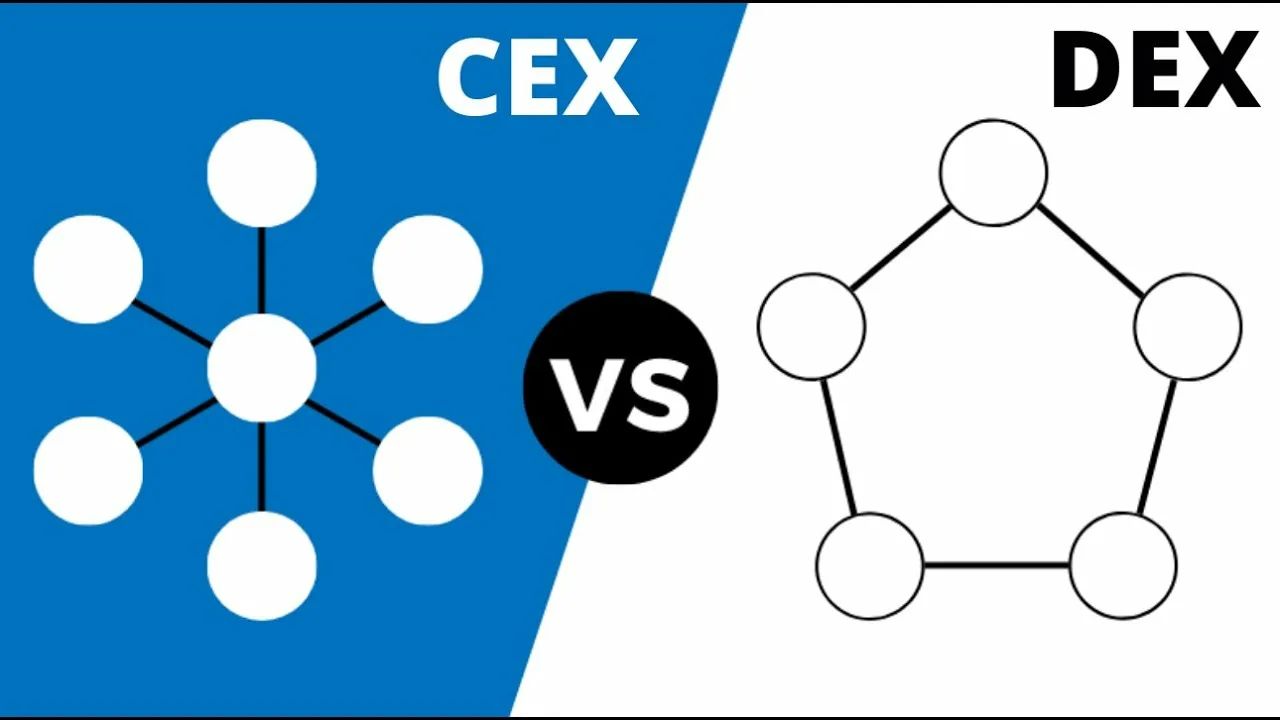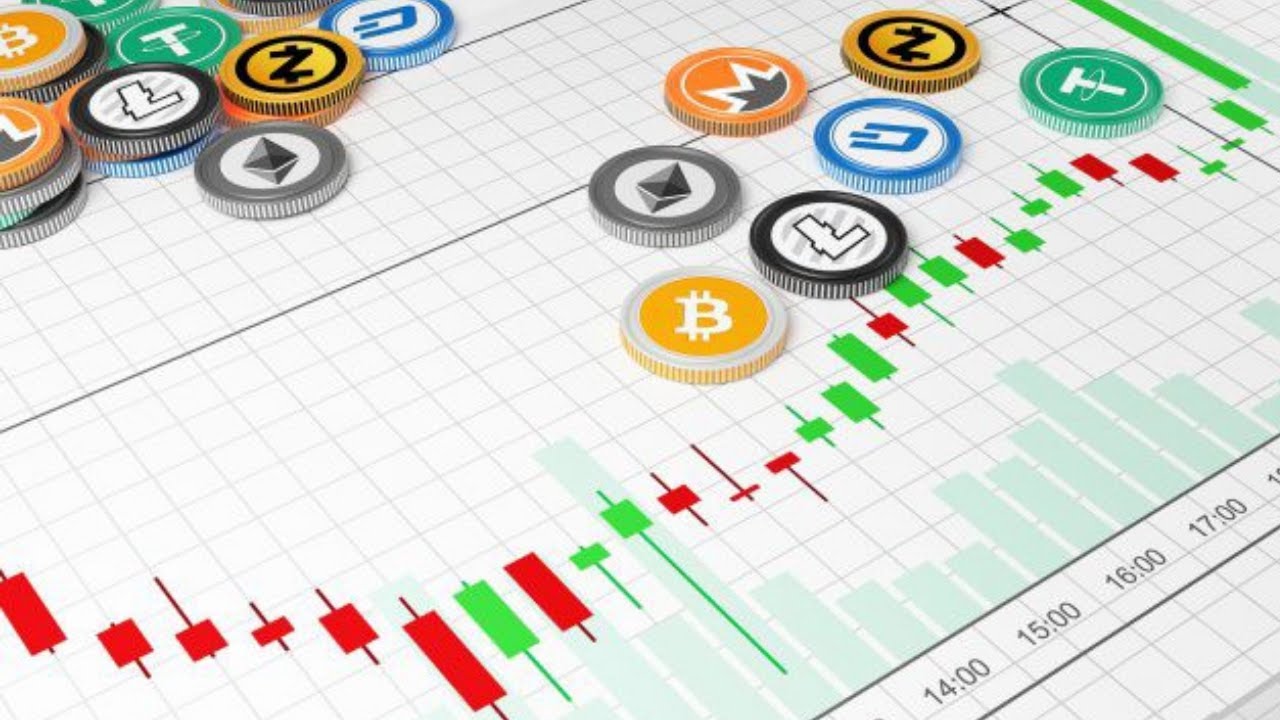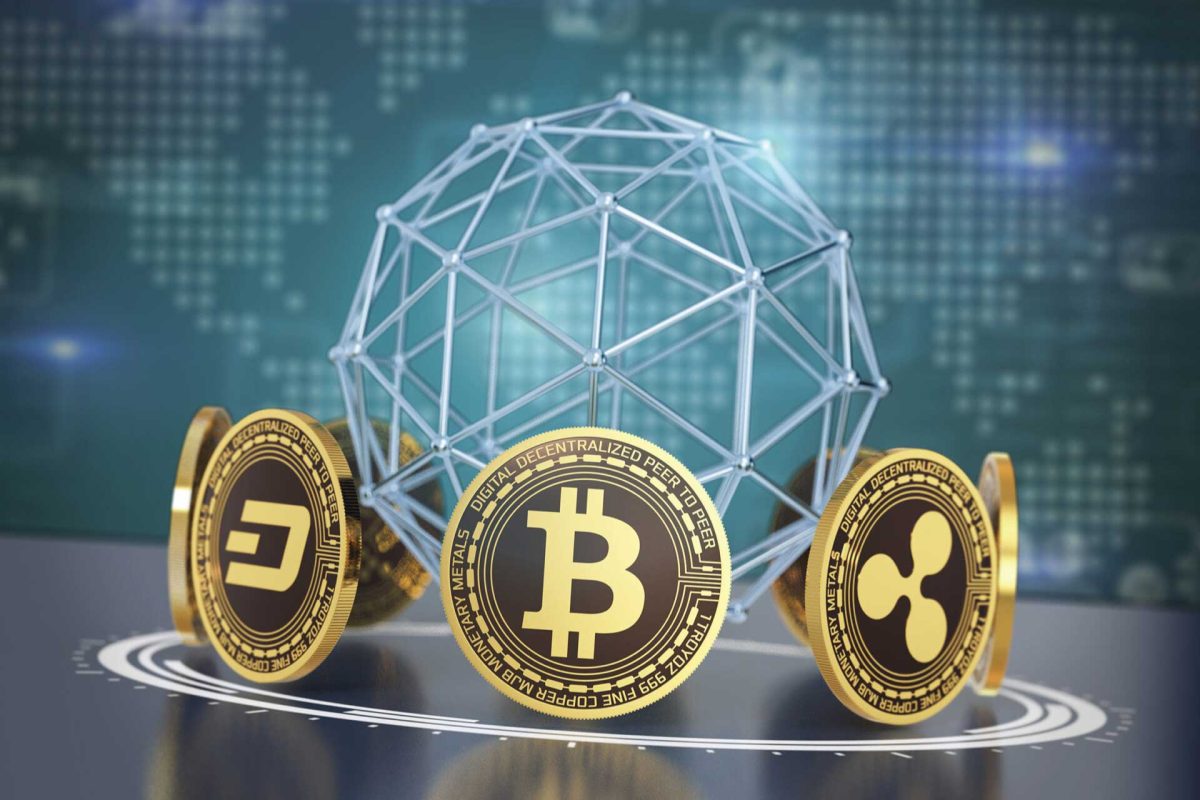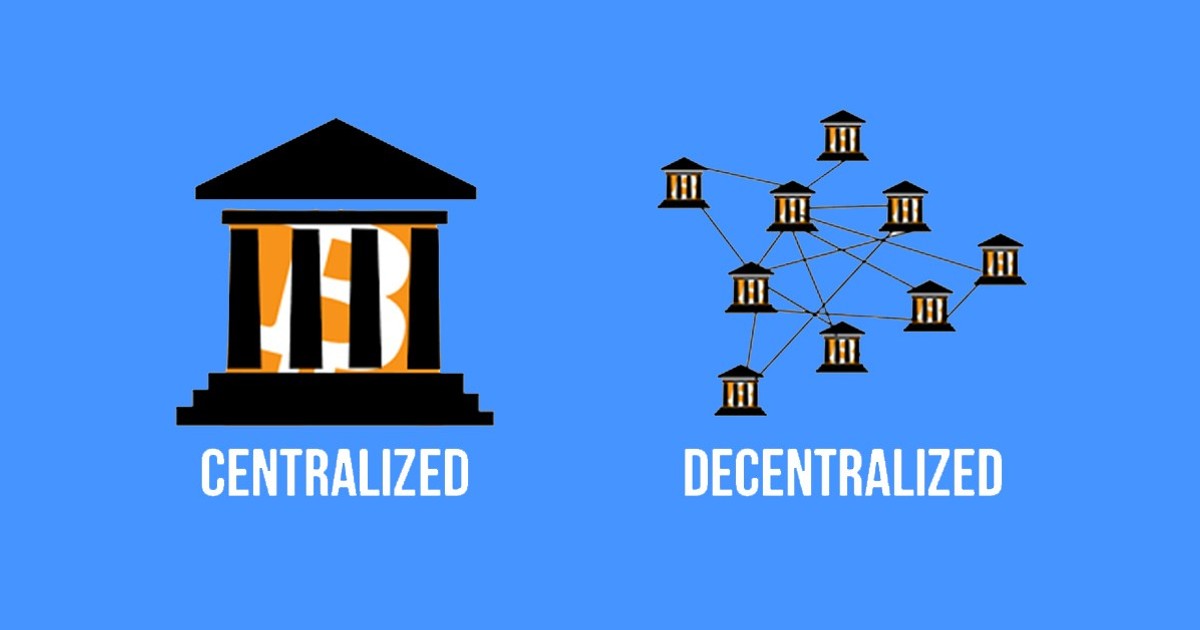Understanding the Differences Between Centralized and Decentralized Crypto Exchanges

The landscape of digital asset trading offers a range of platforms that cater to various participant needs, each characterized by unique operational structures and approaches to asset management. Understanding these differing models is crucial for those engaging in asset acquisition and trading, as they can significantly impact user experience, security, and transaction efficiency.
In today’s rapidly evolving financial ecosystem, participants are often faced with choices that can shape their trading strategies and asset handling practices. The underlying principles governing how these platforms operate play a vital role in determining the level of autonomy and control users have over their funds.
Furthermore, the growing interest in alternative methods of trading has sparked discussions around the implications of platform design, accessibility, and trustworthiness. By delving into the characteristics of various trading methodologies, individuals can make informed decisions that align with their financial goals and risk tolerances.
Understanding Centralized Crypto Exchanges
In the realm of digital asset trading, certain platforms are designed to facilitate transactions between buyers and sellers in a structured environment. These platforms serve as intermediaries, managing operations and ensuring that users can exchange their holdings with ease. This section delves into the characteristics and functions of these platforms that centralize authority and provide a streamlined user experience.

One of the primary features of these intermediaries is user-friendliness. They typically offer:
- Intuitive interfaces that cater to both novice and experienced traders.
- Rapid transaction speeds, allowing for swift exchanges between various digital assets.
- Support for a wide array of payment options, including credit cards and bank transfers.
Security is another critical aspect, as these platforms implement various measures to safeguard their users’ assets. Common practices include:
- Storing the majority of assets in cold storage, reducing exposure to online threats.
- Utilizing advanced authentication methods to protect user accounts.
- Regular security audits to address potential vulnerabilities.
Despite their advantages, there are also inherent risks associated with using these platforms. Users must be aware of:
- The possibility of service interruptions or downtime, which can affect trading activities.
- The risk of hacking incidents, potentially leading to the loss of funds.
- The centralized control of funds, which may not align with the principles of autonomy embraced by many within the digital asset community.
Overall, platforms that centralize operations present both benefits and challenges, making them significant players in the digital asset landscape. Understanding their nuances is essential for anyone looking to navigate this evolving financial frontier.
Pros and Cons of Decentralized Exchanges
Trading platforms that operate without a central authority have gained popularity due to their unique features and advantages. However, while they offer distinct benefits, there are also limitations that potential users should consider. This section discusses both the positive aspects and drawbacks of engaging with these types of trading platforms.
Advantages
One of the primary benefits of using these trading venues is enhanced privacy. Users retain full control over their funds and transactions, reducing the risk of third-party interference. Additionally, transactions on these platforms often come with lower fees compared to traditional alternatives, which can be particularly appealing for frequent traders. Furthermore, as they operate on blockchain technology, these platforms can provide greater transparency and security, leading to increased trust among participants.
Disadvantages
On the flip side, some challenges arise when utilizing these platforms. The user experience can be less intuitive, especially for newcomers, as the interfaces may not be as polished as their centralized counterparts. Furthermore, liquidity can be an issue, making it harder to execute large orders swiftly. Lastly, lacking regulatory oversight can expose users to various risks, including potential scams or system vulnerabilities.
Key Differences Between CEX and DEX
When exploring platforms for trading digital assets, it’s essential to understand the fundamental distinctions that shape their functionality and user experience. These variances can significantly impact aspects such as security, control, and accessibility, which ultimately influence trading strategies and outcomes.
| Aspect | Platform A | Platform B |
|---|---|---|
| Control of Funds | Users entrust funds to the platform | Users maintain full control over their funds |
| Security | Vulnerable to hacks due to centralized storage | Enhanced security through peer-to-peer transactions |
| User Verification | Typically requires extensive KYC procedures | Often allows anonymous trading without strict verification |
| Liquidity | Generally higher liquidity due to a larger user base | Liquidity may vary based on user participation |
| Interface | Usually more beginner-friendly with sophisticated features | May require more technical knowledge to navigate |
| Transaction Fees | May impose higher fees for trades | Often has lower fees or offers fee-free trades |
Security Considerations for Investors
When engaging in digital asset trading, safeguarding one’s assets is paramount. The complexity of the mechanisms utilized within various trading platforms necessitates an understanding of the inherent risks to ensure a secure investment experience.

There are several key aspects that every participant should consider when evaluating security measures:
- Data Protection: Understand how the platform manages and stores user data. Look for protocols that prioritize encryption and secure user authentication.
- Asset Custody: Investigate who is responsible for holding the digital assets. Some platforms utilize third-party custodians, while others allow users to retain control of their funds.
- Withdrawal Procedures: Review the withdrawal operations and their associated security protocols. Look for measures such as two-factor authentication to ensure secure transactions.
- Incident Response: Assess the platform’s plan for addressing security breaches. A transparent and efficient incident response strategy can significantly mitigate potential losses.
- Regulatory Compliance: Ensure that the platform adheres to relevant legal and regulatory standards. Compliance can enhance the overall trustworthiness of the platform.
By carefully considering these factors, individuals can make informed decisions that align with their risk tolerance and enhance the overall security of their investments in the evolving digital landscape.
Trading Experience on Each Platform
The trading journey varies significantly based on the platform utilized. Each option presents distinct functionalities, features, and user experiences that cater to different types of traders. Understanding these differences can empower users to choose the most suitable environment for their trading activities.
User Interface and Navigation
Platforms typically differ in their design and ease of use. Some provide a streamlined interface, allowing even beginners to navigate effortlessly and execute trades quickly. Others may offer advanced charting tools and a multitude of features, appealing to seasoned traders who require comprehensive analytical capabilities. A user-friendly environment can greatly enhance the trading experience, reducing the learning curve and enabling swift decision-making.
Transaction Speed and Fees
Transaction efficiency is critical in the fast-paced trading world. Certain platforms enable rapid order execution, minimizing wait times and potentially maximizing profits. However, it’s essential to consider the costs associated with trading; some platforms impose higher fees on transactions, which can eat into profits. Balancing speed and affordability is key when selecting an ideal venue for trading.
Ultimately, the choice of trading platform influences not only the functionality available but also the overall satisfaction of users as they engage with assets in the digital marketplace.
Future Trends in Crypto Trading Markets
The landscape of digital asset trading is evolving rapidly, driven by technological advancements and changing consumer preferences. As market participants adapt to new conditions, various trends are emerging that will shape the future of how assets are bought, sold, and managed. Understanding these developments is crucial for those looking to navigate this dynamic environment and make informed decisions.
Integration of Advanced Technologies: One of the most significant shifts will be the integration of artificial intelligence and machine learning into trading platforms. These technologies will facilitate more efficient trading practices, enhance security protocols, and allow for sophisticated data analysis, ultimately providing users with better insights and faster transaction capabilities.
Regulatory Evolution: As authorities around the globe seek to establish clearer guidelines, the regulatory landscape is expected to become more defined. This will likely lead to greater consumer protection and transparency, making platforms more trustworthy. Companies that embrace compliance and adapt to these changes will stand out in an increasingly crowded market.
Enhanced User Experience: A trend towards more user-friendly interfaces is anticipated. Engaging and accessible platforms will cater to both novice users and seasoned traders, helping to demystify the process of investing in digital assets. Streamlined features and educational resources will empower users to make informed decisions with confidence.
Growth of Peer-to-Peer Trading: As demand for more personalized trading experiences rises, peer-to-peer models may gain traction. These platforms often allow users to trade directly with one another, emphasizing privacy and autonomy. This trend could disrupt traditional trading methods and challenge established market norms.

Environmental Considerations: As awareness of environmental issues grows, trading operations might increasingly focus on sustainability. This could lead to the development of greener technologies and initiatives aimed at reducing the carbon footprint of transactions, appealing to socially conscious participants.
In conclusion, the future of trading markets is set to be influenced by a series of transformative trends that emphasize innovation, regulatory clarity, user empowerment, and sustainability. Staying informed about these changes will be essential for anyone looking to engage successfully in the evolving marketplace.
Q&A: Centralized vs Decentralized crypto exchanges
What is the primary difference between centralized and decentralized crypto exchanges?
Centralized exchanges (CEXs) are platforms that act as intermediaries between buyers and sellers, facilitating trades and managing customers’ funds. They typically require users to create accounts and provide personal information. Examples include Binance and Coinbase. In contrast, decentralized exchanges (DEXs) operate on blockchain technology, allowing users to trade directly with one another without a third party involved. DEXs, like Uniswap and SushiSwap, require users to connect their wallets and maintain full control over their crypto assets, enhancing privacy and security.
Are decentralized exchanges safer than centralized ones?
Decentralized exchanges are often considered safer because they do not hold users’ funds in a central repository, reducing the risk of hacks or theft. Additionally, DEXs typically operate under a model where users retain control of their private keys, making it difficult for attackers to access funds. However, it’s important to note that DEXs can still be vulnerable to smart contract bugs or exploits. Centralized exchanges, while convenient, can pose risks due to regulatory pressures and potential for operational failure. Ultimately, the safety of using either type of exchange depends on the individual exchange’s security practices and the user’s awareness.
Which type of exchange is better for beginners in cryptocurrency trading?
For beginners, centralized exchanges are generally more user-friendly and easier to navigate. They often provide a simple interface, customer support, and features such as fiat integration, which allows users to buy cryptocurrencies using traditional currencies. Centralized exchanges also offer educational resources that can help novices learn about trading. On the other hand, decentralized exchanges might be more complicated for beginners due to the need to manage wallets, private keys, and transaction fees. While experienced traders may prefer DEXs for their privacy and control, newcomers might find centralized exchanges a better starting point.
What are the fees associated with using centralized vs decentralized exchanges?
Centralized exchanges typically charge transaction fees that can range from 0.1% to 0.5% of the trading volume. They may also have deposit and withdrawal fees, which vary depending on the cryptocurrency and payment method used. Additionally, some exchanges may charge for features like margin trading. On the other hand, decentralized exchanges generally charge lower trading fees but involve gas fees associated with executing transactions on the blockchain. These gas fees can fluctuate based on network congestion and can sometimes exceed the trading fees charged by CEXs. Overall, users should compare both types of exchanges to determine the most cost-effective options for their trading needs.
Can I use both centralized and decentralized exchanges simultaneously for trading?
Yes, you can absolutely use both centralized and decentralized exchanges simultaneously for trading. Many investors choose to leverage the strengths of each type of exchange based on their specific needs. For example, you might use a centralized exchange for larger transactions or to take advantage of lower fiat on-ramp options, while utilizing a decentralized exchange for specific token trades that are not available on CEXs. Additionally, diversifying your trading strategies can help manage risk and take advantage of market opportunities, making it a common practice among seasoned investors.
What are the main differences between centralized and decentralized crypto exchanges?
Centralized crypto exchanges (CEXs) are platforms operated by a company that acts as an intermediary between buyers and sellers. They typically require users to create accounts and deposit their funds into the exchange’s wallet, providing a user-friendly experience with higher liquidity and various trading options. However, they also involve certain risks, such as potential hacking and regulatory scrutiny. On the other hand, decentralized exchanges (DEXs) operate without a central authority, allowing users to trade directly with one another through smart contracts. While DEXs offer increased privacy and control over personal funds, they may have lower liquidity and can be more complex for inexperienced users. Ultimately, the choice between centralized and decentralized exchanges depends on individual investor preferences regarding security, ease of use, and control over assets.
Should investors prefer centralized exchanges over decentralized ones for trading cryptocurrencies?
Choosing between a centralized exchange and a decentralized exchange largely depends on the investor’s goals, security preferences, and experience level. Centralized exchanges are often recommended for beginners due to their intuitive interfaces, customer support, and higher liquidity, making it easier to buy and sell cryptocurrencies quickly. However, investors must also be aware of the risks associated with entrusting their funds to a third party, such as potential hacks or misuse of funds by the exchange. Conversely, decentralized exchanges offer greater control over funds and privacy, making them suitable for more seasoned investors who understand the technical aspects of blockchain technology and are comfortable navigating smart contracts. However, DEXs might lack some of the conveniences offered by their centralized counterparts, such as fiat on-ramps and comprehensive customer support. Therefore, a balanced approach may involve using both types of exchanges depending on the investor’s immediate needs and overall trading strategy.
What is the difference between centralized and decentralized cryptocurrency exchanges?
Centralized cryptocurrency exchanges are platforms where a centralized entity facilitates cryptocurrency transactions, such as buying and selling crypto. These exchanges hold users’ funds and offer a wide range of services like crypto wallet management and trading pairs. Popular centralized exchanges include Binance and Coinbase, which are regulated and provide a more user-friendly experience. On the other hand, decentralized cryptocurrency exchanges (DEXs) operate without a central authority and allow users to trade crypto directly with one another, giving more control over funds. Decentralized exchanges, like Uniswap and PancakeSwap, rely on smart contracts to execute trades.
Why would a crypto investor choose a centralized cryptocurrency exchange over a decentralized one?
A crypto investor might choose a centralized cryptocurrency exchange for its ease of use, faster transactions, and customer support. Centralized exchanges offer trading pairs with high liquidity and the ability to buy crypto using fiat currencies. They also often provide more advanced trading tools and options, making them attractive for active traders. However, centralized exchanges hold users’ funds, meaning they are vulnerable to hacking or regulatory issues. In contrast, decentralized exchanges do not hold users’ funds, giving more control to the crypto trader, but they may have lower liquidity and fewer fiat options.
What are the advantages of decentralized cryptocurrency exchanges?
Decentralized cryptocurrency exchanges (DEXs) provide several advantages over centralized exchanges, including enhanced privacy and security. Since users retain control over their funds with their own crypto wallets, DEXs eliminate the need for third-party custodians. DEXs also offer more flexibility by allowing users to trade a broader range of tokens and cryptocurrencies that may not be listed on centralized platforms. Popular decentralized exchanges like Uniswap and SushiSwap offer users a direct way to swap cryptocurrencies without relying on centralized entities, and transactions are usually facilitated through blockchain technology.
How do centralized exchanges regulate transactions and what impact does this have on crypto investors?
Centralized exchanges regulate transactions by acting as intermediaries between buyers and sellers, managing the crypto wallet services and overseeing the trading process. These exchanges may enforce Know-Your-Customer (KYC) policies and Anti-Money Laundering (AML) procedures to ensure compliance with local regulations. For crypto investors, this means that transactions on centralized platforms are typically faster and easier to execute, but they may also involve more fees and regulatory scrutiny. Centralized exchanges may also impose withdrawal limits or restrict access based on the investor’s location, which can affect liquidity and trading flexibility.
How do decentralized exchanges give crypto traders more control over their transactions?
Decentralized exchanges (DEXs) allow crypto traders to maintain complete control over their funds by using their own crypto wallets for transactions. Since DEXs do not hold users’ assets, traders can directly interact with the blockchain, making it a more secure option for those who value privacy. Additionally, decentralized platforms operate without a central authority, meaning traders can access a wide range of tokens and trade with peers globally without geographical or regulatory limitations. While the user experience may be more complex compared to centralized exchanges, DEXs provide more autonomy for traders.

